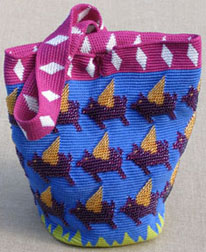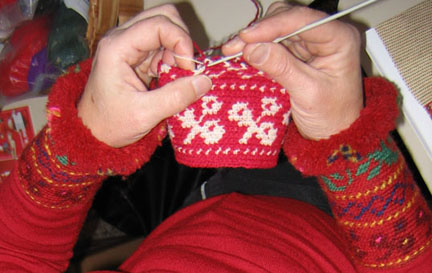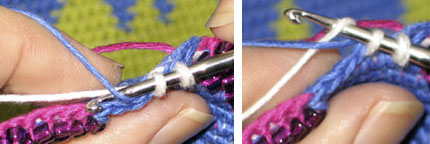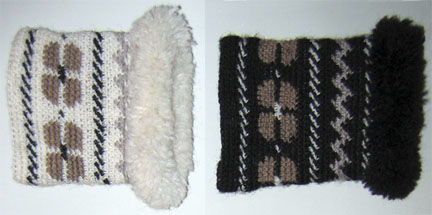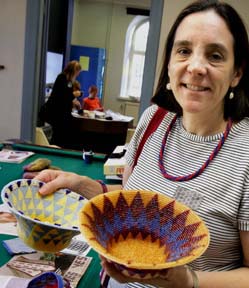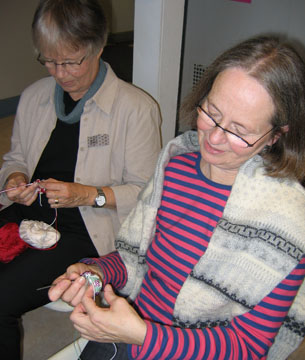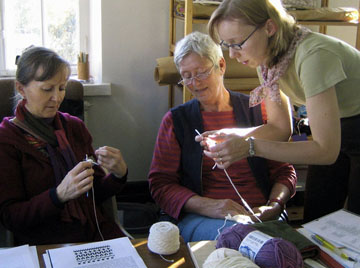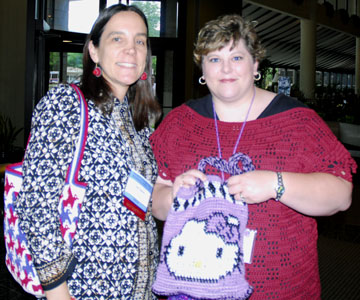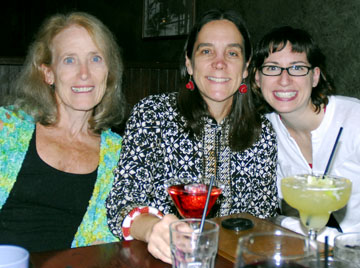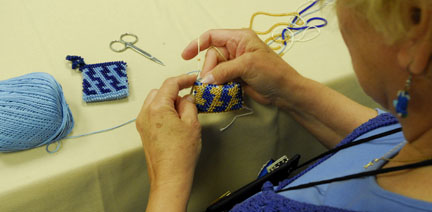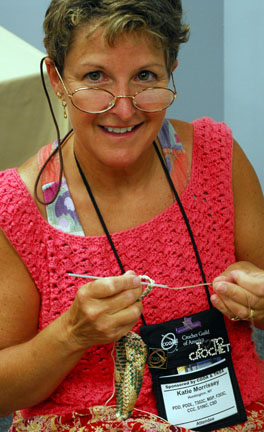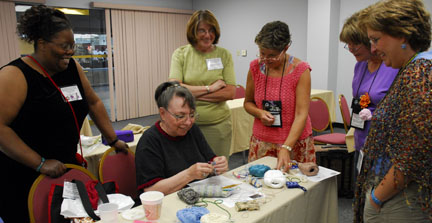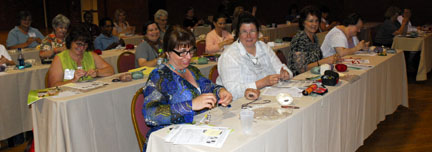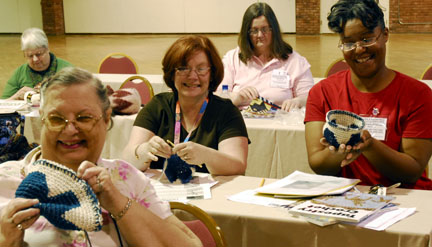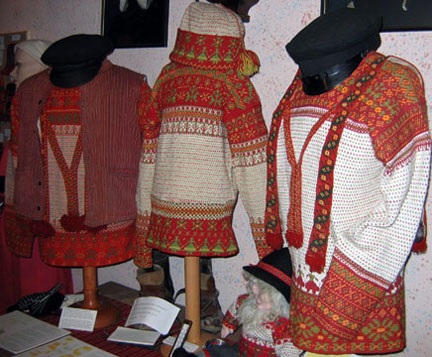
Men’s crocheted and knit sweaters, hat, and suspenders in the Korsnäs Museum.
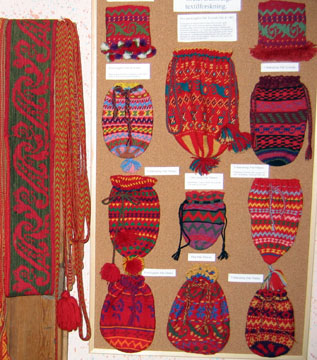
A wide tapestry crocheted sash, a narrow woven sash,
and tapestry crocheted cuffs and bags in the Korsnäs Museum.
Korsnäs sweaters are a stunning combination of tapestry crochet and knitting. Beginning at the bottom, they are crocheted, then knit, then crocheted in rounds for both pullover and open styles. The top seam is hand sewn together, the tube is secured with machine-sewn stitches around the arm openings, then the arm holes are cut. The sleeves are crocheted, then knit, then crocheted from the shoulder to the cuff and then sewn onto the sweater. The neck is edged with a crocheted border. The front is cut open for the button down style, then a decorative edging is added for the button and its holes and to help secure and hide the edges. The last step is to hand sew a narrow, knit band over all the cut and sewn seams to camouflage the joins.
Locals occasionally dress in their traditional costume and demonstrate knitting and crocheting sweaters in the museum. Appointments can be made for group visits.
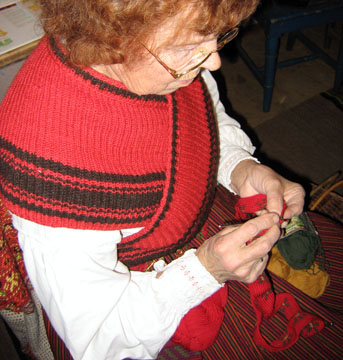
Tapestry crocheting in rounds the lower border of a sweater.
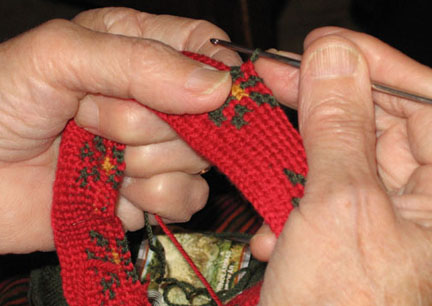
One color yarn rests on the front and the other on the back of the forefinger, while the other fingers grip them for proper tension.
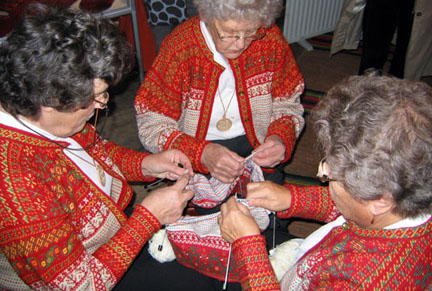
After the crocheted border has been finished, loops are pulled through the crochet stitches so that the body of the sweater may be knit in a tube, traditionally by more than one person at a time on double pointed needles.
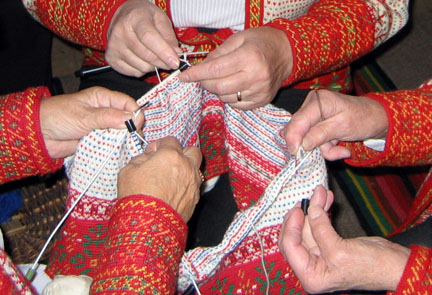
Each knitter completes one partial round, then it is rotated.
Another great place to see Korsnäs textiles is in private and museum collections. Since they are rarely able to exhibit everything, much of it is often in storage. If you make an appointment and are very lucky, though, a curator will let you into the “vaults” and allow photographs, too! Fortunately, luck was with me in Finland.
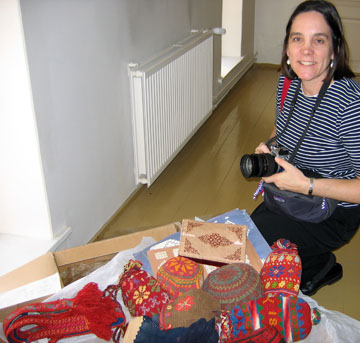
In the “vaults” of the Ostrobothnian Museum.
I suspect that Korsnäs tapestry crochet evolved from nalbinding, a much older looping technique that utilizes sewn loops. With tapestry crochet, only a small loop is pulled through with a hook, whereas with nalbinding, the entire yarn needs to be pulled through each loop with a sewing needle; very labor intensive. Even if the yarn is spun as needed, looping is still much more time consuming than crochet. Both techniques are still used to make mittens in Finland.

Nalbound mittens from the Karin Rosendahl collection.
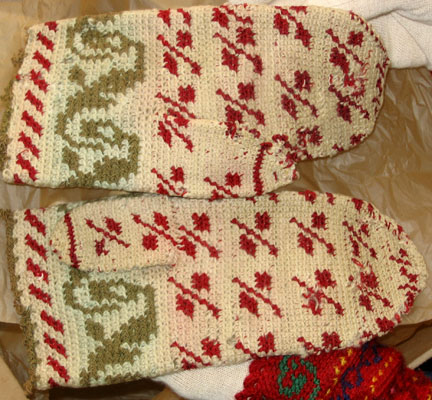
Tapestry crocheted Korsnäs mittens from the Ostrobothnian Museum.

Korsnäs child’s sweater from the Ostrobothnian Museum.

Korsnäs sweater from the Ostrobothnian Museum.
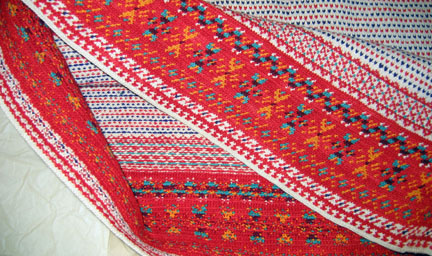
Detail of the lower part of the above sweater.
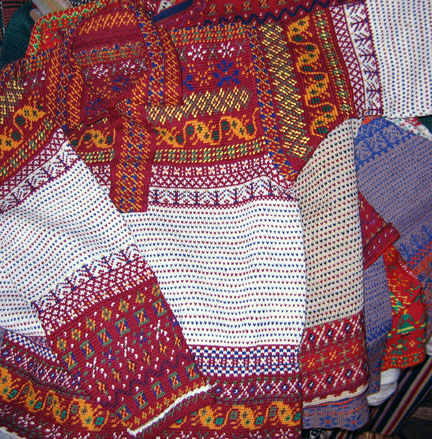
Korsnäs sweaters from the Karin Rosendahl collection.

Collar detail of the above sweater from the Karin Rosendahl collection.
I will always be indebted to the many wonderful people who made this trip possible, especially Marketta Luutonen, Anna-Maija Bäckman, Leena Nyqvist, and Jeanette Rönnqvist-Aro.
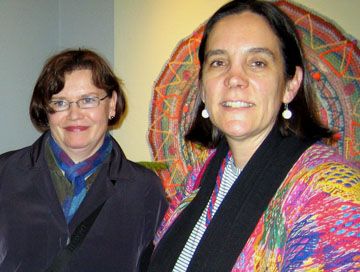
Marketta Luutonen and me.
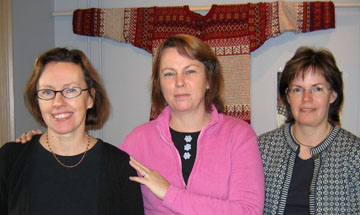
Anna-Maija, Leena, and Jeanette of Loftet.
Some of these names should now be familiar to you. Jeanette crocheted the cuffs in my previous post and Marketta and Anna-Maija have authored several excellent crochet publications. In fact, the best book (in Finnish, Swedish, and English) with history and patterns, is their Decorative Crocheting, which was printed in Vasa in 2003 (ISBN 951-96888-4-6). Marketta also wrote Virkattuja Pusseja (Crocheted Purses), printed in Vasa in 1992 (ISBN 952-90-4278-7). Although written in Finnish, it includes several excellent photos and graphs. Another good book is Korsnäströjor Förr Och Nu, by Gretel Dahlberg, printed in Vasa in 1987, ISBN 951-99832-4-4. Although not in English, it includes historical pictures, several museum pieces (many in color), and some graphs for sweaters and mittens.

It took a year to get my ensemble, but it was worth the wait! Although I ordered mine at the Korsnäs Museum, it is also available online. I will be sure to wear it at the TKGA / CGOA Conference in Oakland in September. I hope to see you there!
